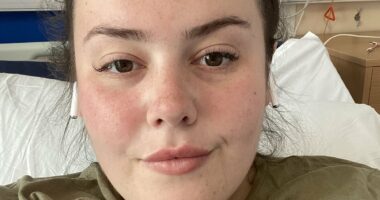Share this @internewscast.com
Find out “New Gene Therapy for Childhood Epilepsy: UCL Researchers Spark Hope for Seizure-Free Future” A glimmer of hope shines for children battling a particularly devastating form of epilepsy, thanks to a groundbreaking gene therapy developed by UCL researchers. This innovative approach, published in the prestigious journal Brain, offers a potential alternative to risky brain surgery for children with focal cortical dysplasia (FCD), a malformation that disrupts the normal functioning of the brain’s frontal lobes.

FCD: A Cruel Foe in a Child’s Brain
FCD wreaks havoc on the brain’s command center, the frontal lobes, crucial for planning, decision-making, and learning. This malformation often manifests as drug-resistant epilepsy, a cruel twist that leaves children vulnerable to unpredictable, debilitating seizures. Surgery remains the current treatment option, but it carries significant risks of permanent neurological damage and doesn’t guarantee seizure freedom.
Enter the Gene Therapy Revolution
UCL researchers, led by Professor Gabriele Lignani and Dr. Vincent Magloire, have devised a revolutionary gene therapy that tackles FCD at its root. Their approach involves introducing a healthy copy of a potassium channel gene into the affected brain cells. These channels act like tiny gates, regulating the flow of potassium ions and thereby controlling the electrical activity of neurons. By boosting potassium channel activity, the researchers aim to stabilize neuronal firing, potentially preventing seizures.
Mice Show the Way: A Promising Glimpse into the Future
In a rigorous study on mice with FCD-like symptoms, the gene therapy delivered impressive results. Compared to a control group, treated mice experienced an astonishing 87% reduction in seizures, a testament to the therapy’s effectiveness. Moreover, the treatment didn’t affect the mice’s memory or behavior, demonstrating its safety and specificity.
From Mice to Humans: A Cautiously Optimistic Path Forward
Buoyed by these encouraging results, the UCL team is fast-tracking the therapy’s journey to human trials. Plans for a first-in-human study are already underway, aiming to bring this potentially life-changing treatment to children within the next five years.
Read Related Also: Almost 90% of doctors think the way physician associates or anaesthesia associates work in the NHS could be a risk to patient safety, survey finds
A Beacon of Hope for Families Battling Epilepsy
This breakthrough represents a significant leap forward in the fight against childhood epilepsy. For families living in the shadow of unpredictable seizures, the promise of a safer, more effective treatment like gene therapy offers a glimmer of hope for a brighter future. While the road to a definitive cure remains long, UCL researchers have ignited a spark of optimism, paving the way for a future where children with FCD can live a life free from the shackles of epilepsy.
Beyond the Text: A Visual Journey
To further enhance your understanding, imagine this:
- A microscopic view of a brain cell, its membrane dotted with potassium channels, glowing as they open and close, regulating the flow of ions.
- A child, eyes wide with newfound hope, playing freely without fear of a sudden seizure.
- A scientist in a lab, holding a vial containing the gene therapy, a symbol of the tireless pursuit of a cure.
These images, along with the factual information, can paint a vivid picture of the impact this research holds for children with FCD and their families.
I hope this expanded version provides a more comprehensive and engaging insight into the exciting world of UCL’s gene therapy research for childhood epilepsy. Please don’t hesitate to ask if you have any further questions.
Continue to check our website Celeb99.com for more articles of this kind. And, please use our comment section as well, we would love to hear from you.














